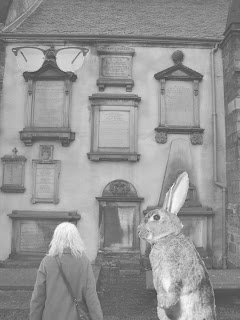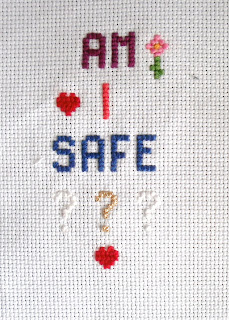As I write about my creative adventures, I sometimes wonder if I have missed out by not doing an undergraduate arts course. One thing I miss is the time to experiment and the space to fail. Because there’s more to being an artist than mooching around trying to look edgy, more than painting; you have to experiment, try different things. This, of course, is exactly what I am doing, but one practice is maybe a little bit too out there, even for me.
Aspiring artists must form a band. It’s the law.
I can’t play anything at all, and my singing voice has been accurately but brutally described as a merciless weapon of death, so I doubt my offer of lead vocals will be welcomed (mind you, that didn’t stop Ian Brown.)
I asked my friends for help. Carla Easton (her again) sings and plays keyboards and her work is really good (she’s also an excellent artist, but don’t tell her I said that). I asked if she wanted to work with me, but she just ignored me.
Then I asked my friend Michael McGoughrin. He’s in the 1990’s and plays with The Vaselines. I asked him to work with me. He was nice about it – shuffled politely but ultimately ignored me as well.
The thing is, I don’t blame them at all, but then - you can’t blame me for asking. Being in band isn’t part of the curriculum at an art school, it’s just that so many bands have been to art school (or met there or have members who attended): The Who, Gang Of Four, Franz Ferdinand, The Three Johns, Jarvis Cocker, the list goes on.
If I am to be an artist I must innocently form a band. I can’t play anything, nor can I write songs. Perhaps I can intone lyrics in an edgy fashion, and pretend I mean it to sound like that? Disguise my voice with technology, like Mogwai or the cast of Glee? Or better still, make a great track like Martin Creed’s Dreaming – Not Dreaming. Even Bob and Roberta Smith is in a band. I can’t compete.
I can try most things, I can try oils and watercolours, but just don’t expect to see me down playing the main stage at Glastonbury
But it isn’t about the music. It’s about the idea of an art school, that giddy sense of can-do-anything, or three/four years of creative experimentation in front of a largely supportive audience, the ability to make and do what you want, and to express yourself in ways other than straightforward painting and drawing. There are no barriers: they all run into together, performance, painting, and fashion are estranged orphan children of the same parents who occasional attend family reunions. Even so, it is possible to flit between them all.
Forming a band is testimony to the sense of possibility that exists at an art school, where people will tolerate your experimental noise and innocent (musical) fumblings, which is a good thing.
As for my singing? One word people: earplugs. Good ones – the best.






















